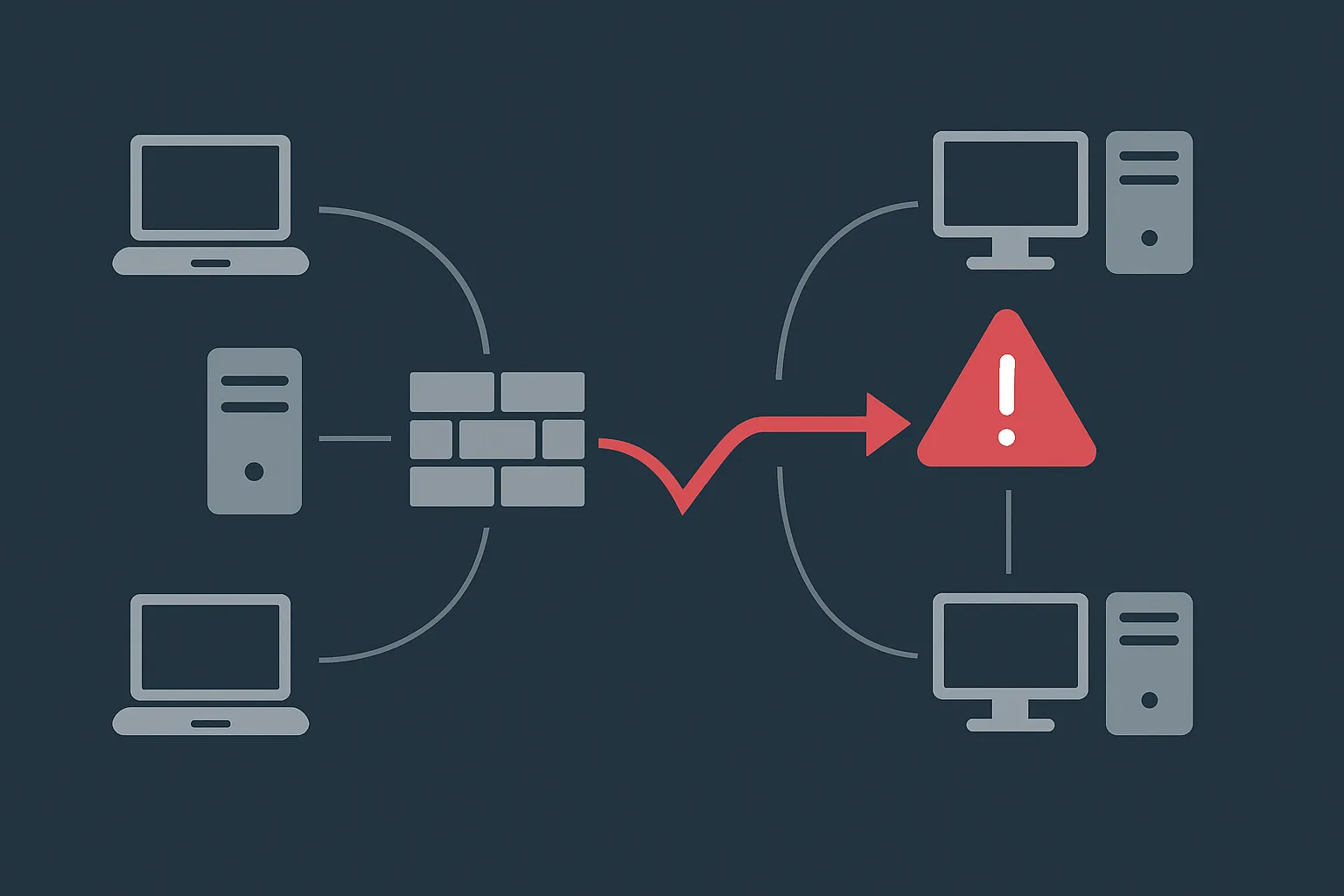Once attackers gain a foothold inside your network—whether by phishing, software vulnerabilities, or compromised credentials—their next move is almost always lateral movement. This allows them to explore your environment, access higher privileges, and ultimately reach critical assets.
Lateral movement is stealthy, often mimicking legitimate administrative activity. Without the right detection and prevention mechanisms, attackers can dwell for days or even months without being caught.
This article provides a detailed roadmap for detecting and stopping lateral movement using logging, behavioral analysis, internal traffic monitoring, and strong segmentation policies.
What Is Lateral Movement?
Lateral movement is the method attackers use to move across a network after an initial breach. Rather than attacking from outside, the adversary uses the trust and access of an internal account or system to pivot toward their objective.
Common techniques include:
- Remote Service Abuse (e.g., RDP, SMB, WinRM)
- Credential Dumping and Reuse (e.g., pass-the-hash, pass-the-ticket)
- Command Execution Tools (e.g., PsExec, WMI)
- Scheduled Tasks or Remote Services
- Exploitation of Trust Relationships
Why Lateral Movement Is Hard to Detect
- It often involves legitimate admin tools and credentials.
- Traffic remains internal—less scrutinized than inbound/outbound.
- Attacker behavior can appear similar to normal IT operations.
- Logs are often decentralized or lack critical context.
Core Strategies to Detect Lateral Movement
1. Enable Deep and Centralized Logging
Collect and aggregate logs from:
- Authentication systems: logon/logoff events, failed attempts, protocol types.
- Endpoints: process creation, script execution, privilege escalation attempts.
- Network traffic: internal traffic flows, unexpected port activity.
- Directory services: group changes, delegated permissions, new privileged accounts.
Centralize these logs in a SIEM or log aggregator, and standardize event formats where possible.
2. Monitor for Behavior Anomalies
Baseline what “normal” looks like:
- Who logs in where
- What hours users typically operate
- Which systems are accessed by which accounts
Trigger alerts for:
- Logins from new or unexpected systems
- Use of administrator tools from non-admin endpoints
- Multiple authentication failures followed by success
- Accounts accessing multiple systems rapidly
3. Detect Known Lateral Movement Tools
Identify and alert on:
- PsExec usage (process creation from admin shares)
- PowerShell remoting (remote session spawns)
- WinRM commands
- WMI-based actions
- Scheduled tasks created remotely
All these leave fingerprints in event logs and process tracking tools.
4. Use Endpoint and Network Telemetry
Install endpoint agents (EDR or similar) that capture:
- Script execution
- Credential theft tools (e.g., mimikatz signatures)
- Command lines used with remote tools
On the network side:
- Use internal firewalls or tap points to monitor traffic.
- Flag SMB/RDP/LDAP/WinRM traffic between endpoints that don’t normally talk.
- Rate-limit traffic to/from admin subnets.
Practical Steps to Stop Lateral Movement
1. Enforce Least Privilege
- No shared admin credentials
- Local admin access only where required
- Regularly rotate passwords (use tools like LAPS)
- Disable unused accounts and stale devices
2. Implement Network Segmentation
- Break the network into logical security zones
- Block or restrict unnecessary east-west traffic
- Use VLANs or microsegmentation (e.g., software-defined perimeter)
- Prevent workstations from accessing each other unless required
3. Harden Endpoints and Services
- Disable unused services and remote management tools
- Patch regularly—especially against privilege escalation and lateral movement exploits
- Use host-based firewalls to limit connections
- Configure Windows with hardened audit policies
4. Protect Authentication and Identity
- Deploy MFA even for internal services
- Monitor Kerberos ticketing (look for golden ticket behavior)
- Review group memberships and privileges regularly
- Alert on new admin account creation
5. Introduce Honeytokens and Decoys
- Plant fake credentials or systems to trigger alerts when accessed
- Deploy internal honeypots to catch unauthorized scans or lateral probing
- Use decoy SMB shares or RDP targets with alerts on interaction
Response Workflow When Detected
If lateral movement is detected:
- Isolate the endpoint or account used.
- Review logons and traffic patterns from the compromised host.
- Audit group memberships, recent changes, and service accounts.
- Check for persistence (e.g., scheduled tasks, WMI events).
- Initiate incident response, re-image compromised systems, reset credentials.
- Harden systems to prevent recurrence.
Common Mistakes to Avoid
| Mistake | Impact | Prevention |
|---|---|---|
| Ignoring internal traffic | Missed signs of attacker pivoting | Monitor east-west traffic and baseline activity |
| Over-privileged accounts | Attackers can access too much too easily | Enforce least privilege & review frequently |
| Inadequate logging | Attacks go undetected | Enable detailed logs and central collection |
| Trusting known hosts blindly | Attacker may compromise a known asset | Validate behavior, not just identity |
| Assuming perimeter is enough | Internal threats bypass the perimeter | Use Zero Trust principles internally |
Conclusion
Stopping lateral movement is about visibility, context, and layered defense. Once inside, attackers count on your network’s blind spots and over-trust. By improving logging, segmenting traffic, enforcing privilege discipline, and leveraging behavioral analytics, you can reduce dwell time, spot compromise early, and prevent a breach from becoming a disaster.


